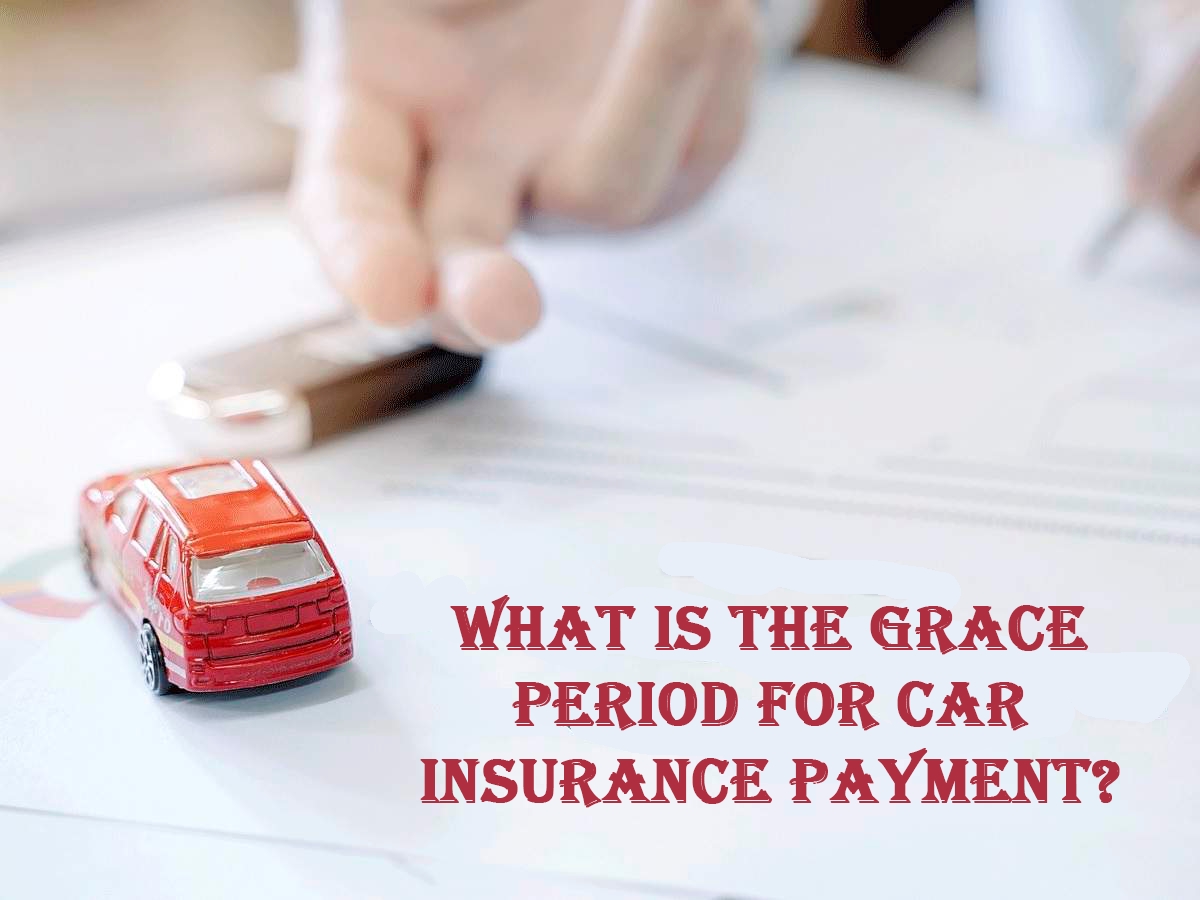

Finance
How Long Of A Grace Period For Car Insurance?
Modified: February 21, 2024
Learn about the ideal grace period for car insurance payments and how it impacts your finances. Understand the importance of managing your insurance payments effectively.
(Many of the links in this article redirect to a specific reviewed product. Your purchase of these products through affiliate links helps to generate commission for LiveWell, at no extra cost. Learn more)
Table of Contents
Introduction
Introduction
Car insurance is a critical component of responsible vehicle ownership, offering financial protection in the event of an accident, theft, or damage. A grace period for car insurance refers to the additional time provided by insurance companies to pay the premium after the due date without facing a lapse in coverage. Understanding the length of this grace period is essential for policyholders to avoid any potential gaps in coverage and the associated risks.
The grace period for car insurance can vary depending on several factors, including state regulations, insurance company policies, and personal circumstances. It's crucial for policyholders to be aware of these factors to ensure they have a clear understanding of the grace period applicable to their car insurance policy.
In this article, we will delve into the various factors that influence the length of the grace period for car insurance, including state requirements, insurance company policies, and personal circumstances. By gaining insight into these factors, readers will be better equipped to navigate the complexities of car insurance and make informed decisions regarding their coverage.
Understanding the nuances of grace periods for car insurance empowers policyholders to manage their insurance responsibilities effectively, ultimately contributing to their financial security and peace of mind on the road. Let's explore the key factors that play a role in determining the length of the grace period for car insurance.
Factors to Consider
When evaluating the grace period for car insurance, several crucial factors come into play, shaping the duration of this additional window for premium payment. Understanding these factors is essential for policyholders to navigate their insurance obligations effectively and avoid potential lapses in coverage.
- Policy Terms: The specific terms outlined in the car insurance policy significantly influence the length of the grace period. Some insurance policies may offer a more extended grace period, providing policyholders with additional time to make their premium payments without risking a lapse in coverage.
- Payment History: A policyholder’s payment history can impact the grace period for car insurance. Those with a consistent track record of timely payments may be granted a more lenient grace period by their insurance provider, reflecting their responsible financial behavior.
- Insurance Company Policies: Different insurance companies have varying policies regarding grace periods. It’s essential for policyholders to familiarize themselves with their insurer’s specific guidelines to understand the duration of the grace period provided.
- State Regulations: State laws and regulations play a significant role in determining the length of the grace period for car insurance. Some states may mandate a minimum grace period, offering a standardized level of protection for policyholders across the region.
- Communication with Insurer: Maintaining open communication with the insurance provider can be instrumental in understanding and potentially extending the grace period. In certain circumstances, insurers may be willing to accommodate policyholders facing temporary financial challenges, thereby adjusting the grace period accordingly.
Considering these factors provides policyholders with a comprehensive perspective on the grace period for car insurance, enabling them to make informed decisions and take proactive measures to ensure continuous coverage for their vehicles. By staying informed and proactive, policyholders can navigate the complexities of car insurance with confidence and clarity.
State Requirements
State regulations play a pivotal role in shaping the grace period for car insurance, with specific requirements dictating the duration of this additional window for premium payment. It’s essential for policyholders to be cognizant of their state’s regulations to ensure compliance and a comprehensive understanding of the grace period applicable to their car insurance policy.
While the grace period for car insurance can vary significantly from state to state, some states have implemented specific mandates to standardize this aspect of insurance coverage. For instance, certain states may stipulate a minimum grace period, ensuring that policyholders have a reasonable timeframe to settle their premium payments without facing an immediate lapse in coverage.
Policyholders should familiarize themselves with their state’s insurance regulations, either by consulting with their insurance agent or accessing official state resources. By understanding the specific requirements set forth by their state, policyholders can gain clarity on the length of the grace period and the protections afforded to them under the law.
Furthermore, staying informed about state requirements empowers policyholders to advocate for their rights and seek appropriate recourse if they encounter any discrepancies or challenges related to the grace period for car insurance. This knowledge also enables them to engage in meaningful discussions with their insurance providers, fostering a proactive approach to managing their coverage obligations.
By acknowledging and adhering to state requirements pertaining to the grace period for car insurance, policyholders can navigate their insurance responsibilities with confidence and ensure continuous protection for their vehicles. Understanding the regulatory landscape surrounding the grace period is a fundamental aspect of responsible car ownership and insurance management.
Insurance Company Policies
Insurance companies establish specific policies and guidelines regarding the grace period for car insurance, shaping the duration of this critical window for premium payment. Understanding the nuances of insurance company policies is essential for policyholders to effectively manage their insurance obligations and make informed decisions regarding their coverage.
Insurance providers may vary in their approach to grace periods, with some offering more lenient policies that provide policyholders with an extended timeframe to settle their premium payments without facing immediate consequences. Conversely, other insurers may enforce stricter guidelines, necessitating prompt payment to maintain continuous coverage.
Policyholders can familiarize themselves with their insurance company’s policies by reviewing their insurance documents, contacting their insurance agent, or accessing the insurer’s official resources. By gaining insight into the specific policies governing the grace period, policyholders can align their payment strategies and expectations with their insurer’s guidelines, mitigating the risk of coverage lapses.
Furthermore, understanding insurance company policies surrounding the grace period empowers policyholders to engage in proactive communication with their insurer. In certain circumstances, policyholders may require additional time to settle their premium payments due to unforeseen financial challenges. By communicating openly with their insurer, policyholders can explore potential accommodations or solutions, such as extending the grace period, to maintain continuous coverage for their vehicles.
Remaining informed about insurance company policies related to the grace period for car insurance equips policyholders with the knowledge and agency to navigate their insurance responsibilities effectively. By proactively engaging with their insurer and aligning with the established policies, policyholders can uphold their coverage obligations and safeguard their vehicles against potential risks.
Personal Circumstances
Policyholders’ individual circumstances and financial situations can significantly impact the grace period for car insurance, influencing the flexibility and accommodations available for premium payments. Understanding how personal circumstances intersect with the grace period is crucial for policyholders to navigate potential challenges and maintain continuous coverage for their vehicles.
During times of unexpected financial strain, such as job loss or medical emergencies, policyholders may encounter difficulties in meeting their premium payment deadlines. In such situations, it is essential for policyholders to communicate openly with their insurance provider, explaining their circumstances and exploring potential options to extend the grace period or arrange alternative payment arrangements.
Moreover, maintaining a consistent and responsible payment history can positively influence the grace period for car insurance. Policyholders with a track record of timely payments and responsible financial behavior may be viewed favorably by their insurer, potentially leading to more lenient accommodations during challenging periods.
Policyholders should also consider the impact of their personal circumstances on the grace period when evaluating their overall financial preparedness. By proactively managing their finances and maintaining open communication with their insurer, policyholders can navigate potential challenges and ensure continuous coverage for their vehicles, even during periods of financial uncertainty.
Understanding the intersection of personal circumstances with the grace period for car insurance empowers policyholders to take proactive measures to safeguard their coverage and address temporary financial challenges effectively. By engaging in open communication and exploring potential accommodations, policyholders can navigate their insurance responsibilities with resilience and confidence, ultimately maintaining the protection and security provided by their car insurance coverage.
Conclusion
As policyholders navigate the complexities of car insurance, understanding the nuances of the grace period is essential for maintaining continuous coverage and financial security. The length of the grace period for car insurance is influenced by a myriad of factors, including policy terms, payment history, state requirements, insurance company policies, and personal circumstances. By comprehensively considering these factors, policyholders can proactively manage their insurance obligations and mitigate the risk of coverage lapses.
State requirements play a pivotal role in shaping the grace period for car insurance, with specific regulations dictating the minimum duration of this additional window for premium payment. Policyholders should familiarize themselves with their state’s insurance laws to ensure compliance and gain clarity on the protections afforded to them under the law.
Furthermore, insurance company policies significantly impact the grace period, with insurers establishing specific guidelines governing premium payment accommodations. By understanding and aligning with their insurer’s policies, policyholders can navigate their coverage obligations effectively and engage in proactive communication to address potential challenges.
Personal circumstances also intersect with the grace period, influencing the flexibility and accommodations available for premium payments. Policyholders facing temporary financial challenges can benefit from open communication with their insurer and proactive financial management to ensure continuous coverage for their vehicles.
Ultimately, a comprehensive understanding of the grace period for car insurance empowers policyholders to navigate their insurance responsibilities with confidence and resilience. By staying informed, maintaining open communication, and proactively managing their financial circumstances, policyholders can uphold their coverage obligations and safeguard their vehicles against potential risks, contributing to their overall peace of mind and security on the road.
In conclusion, the grace period for car insurance serves as a vital safeguard, offering policyholders the necessary flexibility to manage their premium payments and maintain continuous coverage. By considering the multifaceted factors that influence the grace period and taking proactive measures to address potential challenges, policyholders can ensure that their vehicles remain protected, reinforcing the fundamental role of car insurance in promoting financial resilience and security.














